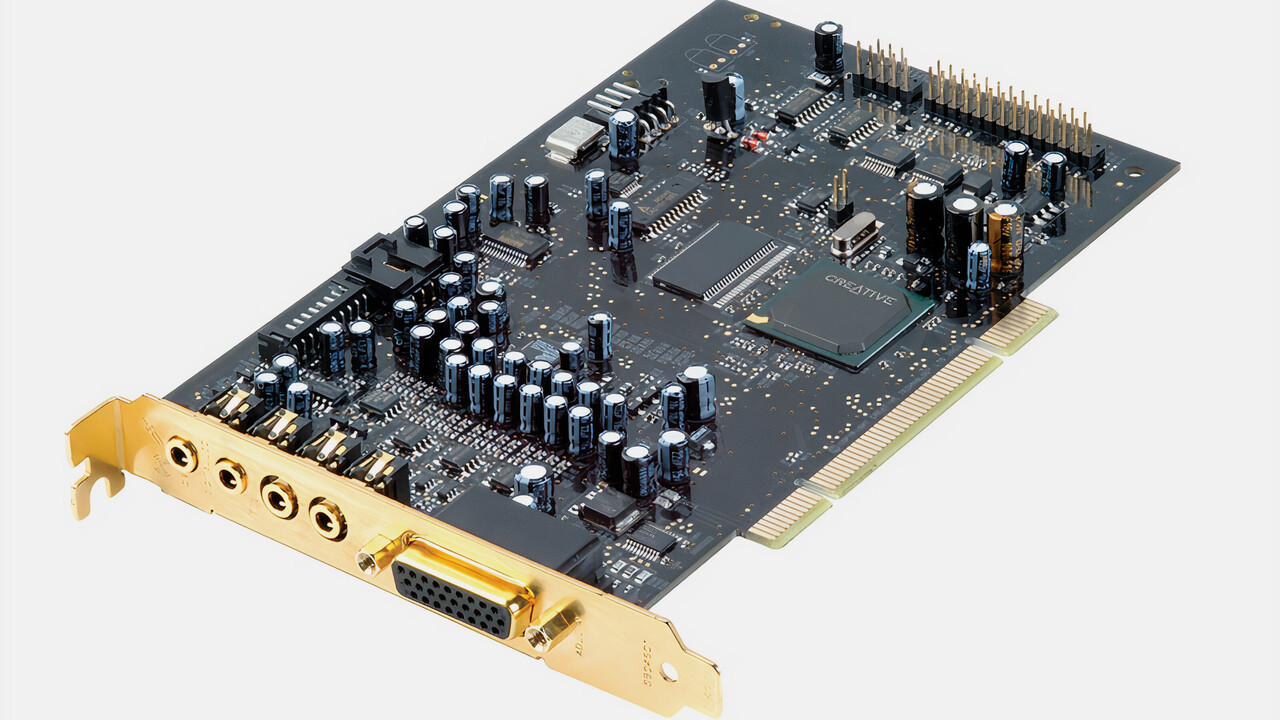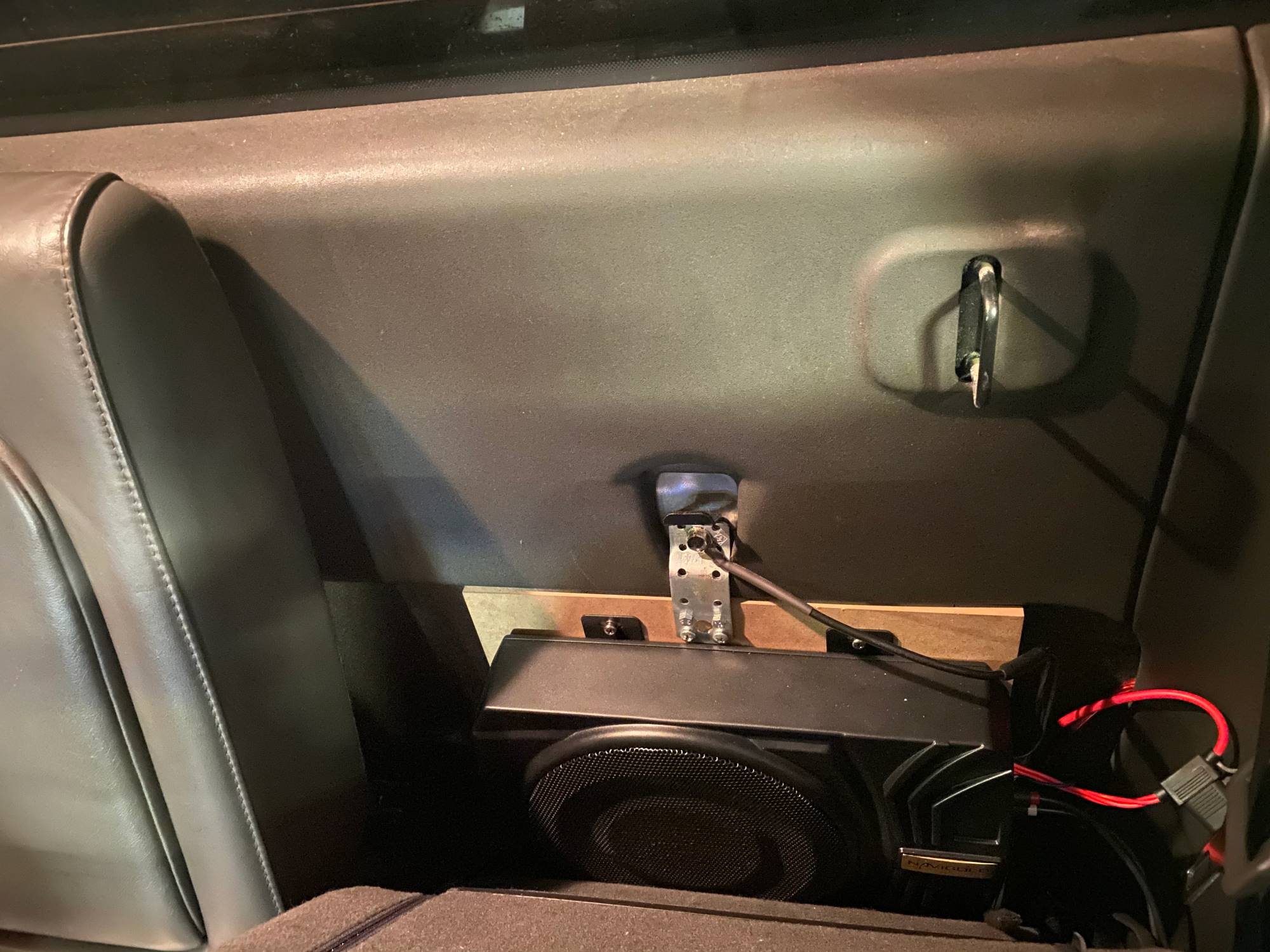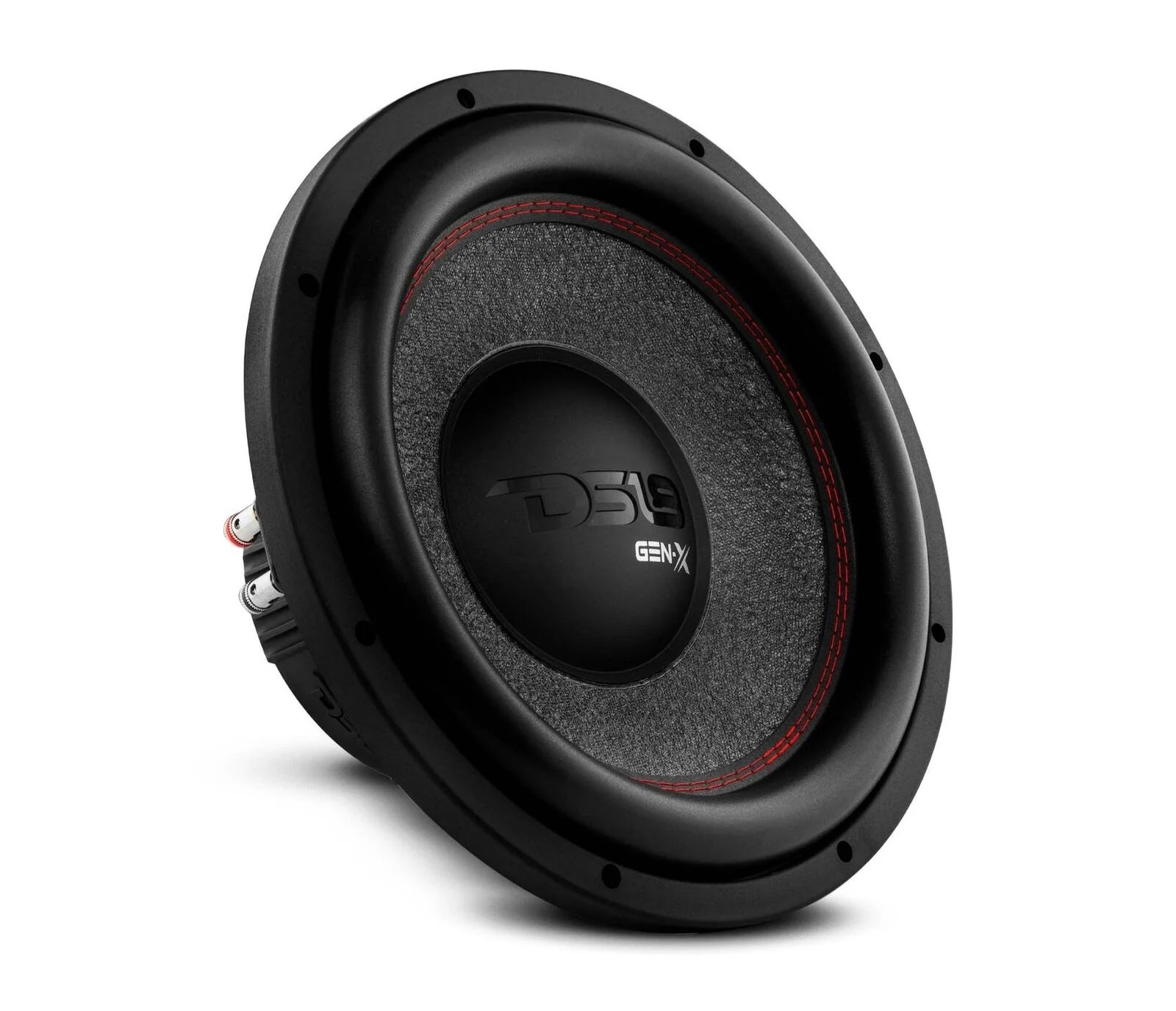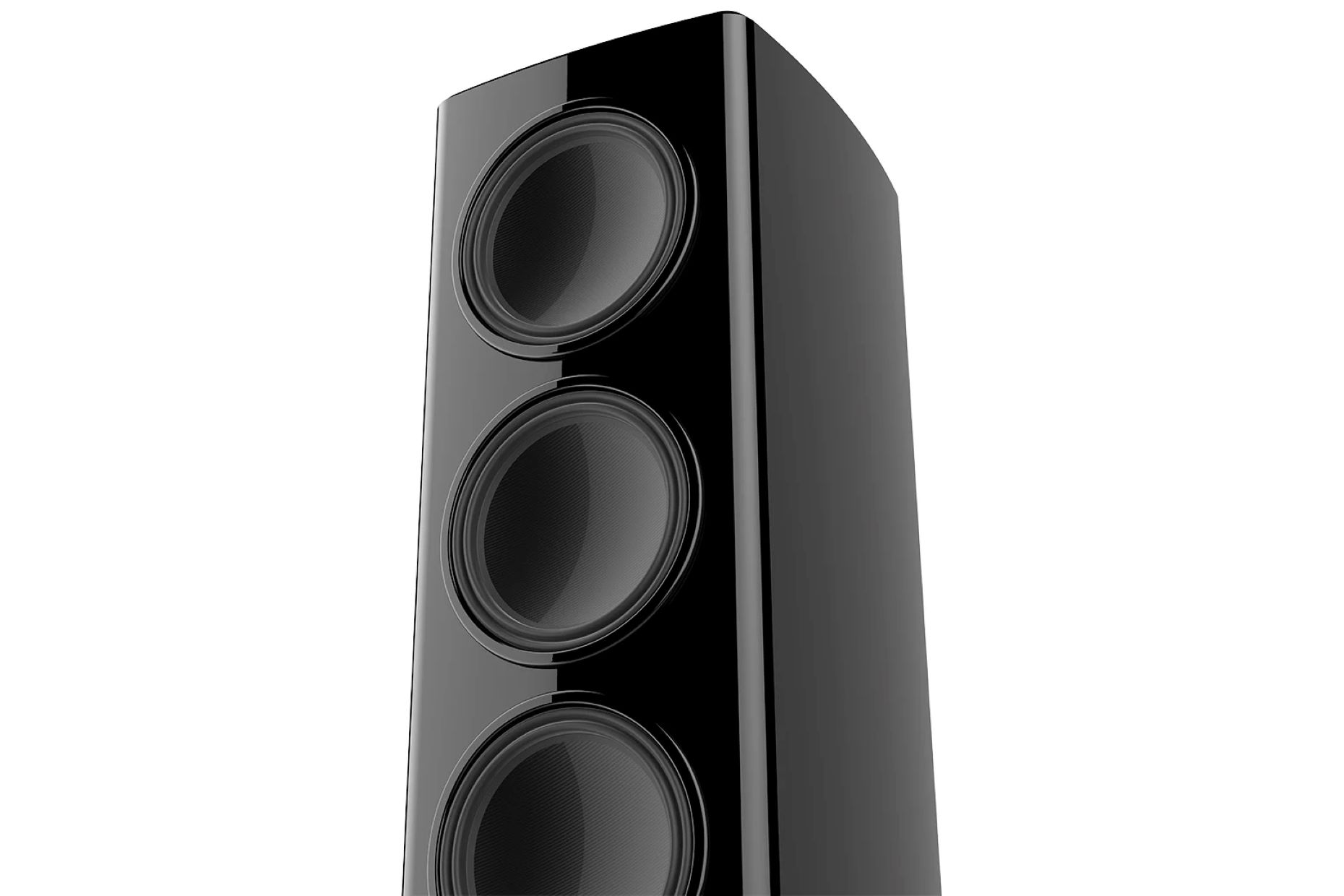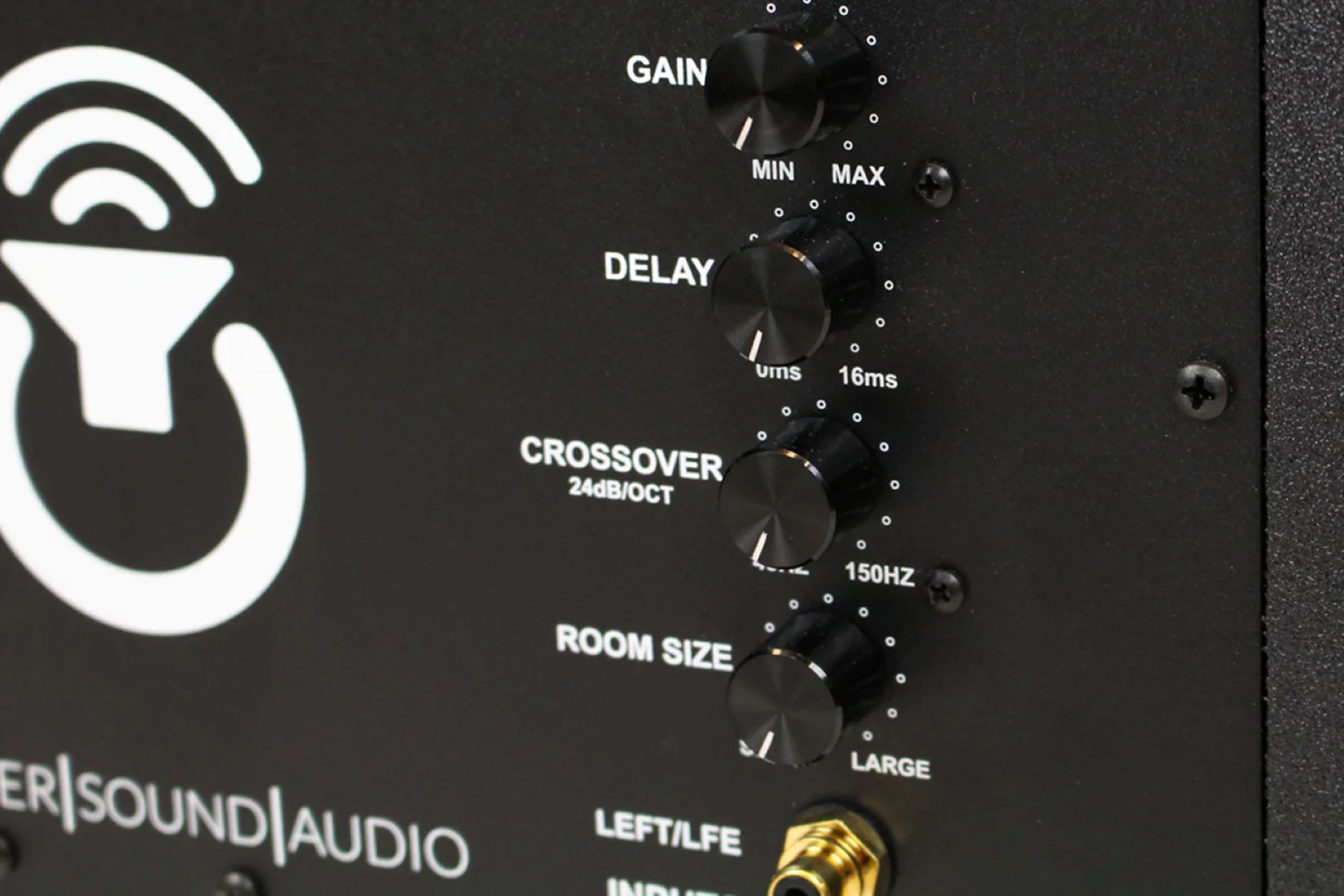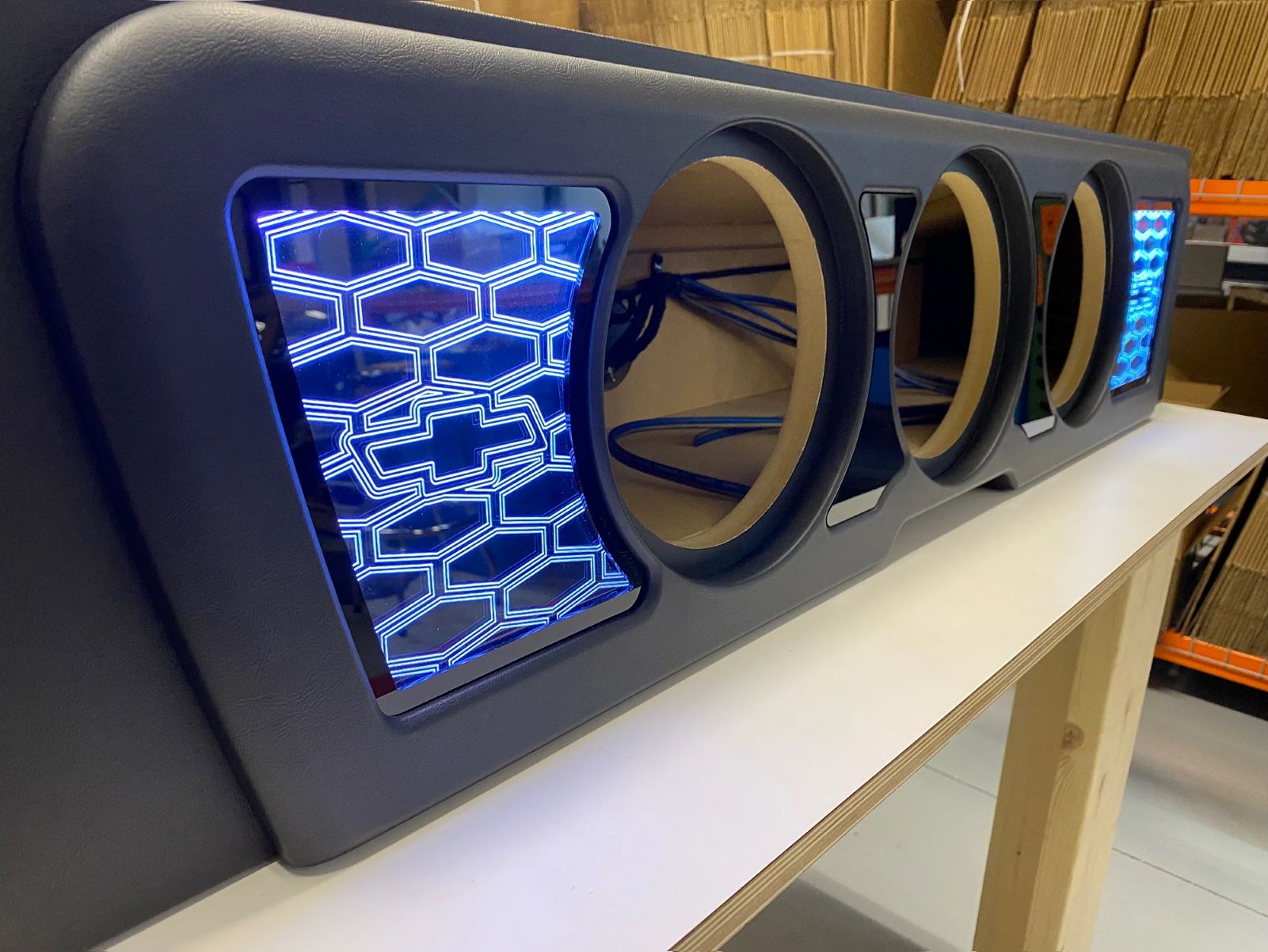Home>Devices & Equipment>Subwoofer>How To Port A Subwoofer Enclosure
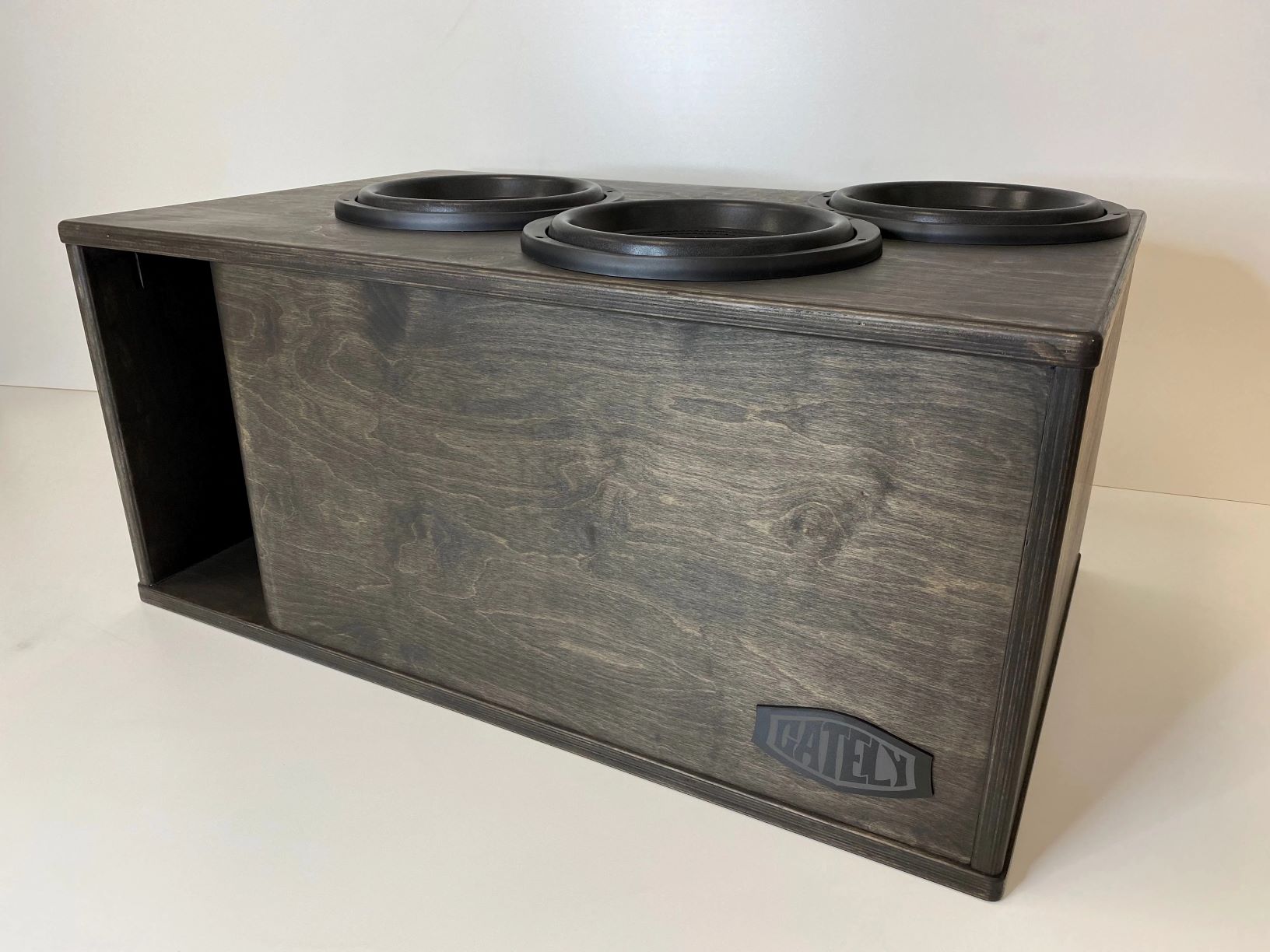

Subwoofer
How To Port A Subwoofer Enclosure
Published: January 22, 2024
Learn how to properly port a subwoofer enclosure for optimal sound quality and performance. Find step-by-step instructions and expert tips on porting your subwoofer.
(Many of the links in this article redirect to a specific reviewed product. Your purchase of these products through affiliate links helps to generate commission for AudioLover.com, at no extra cost. Learn more)
Table of Contents
- Introduction
- Step 1: Determine the Desired Changes
- Step 2: Measure the Existing Subwoofer Enclosure
- Step 3: Design the New Subwoofer Enclosure
- Step 4: Prepare the Tools and Materials
- Step 5: Remove the Subwoofer from the Existing Enclosure
- Step 6: Disconnect and Remove the Wiring
- Step 7: Mark and Cut the New Port Hole(s)
- Step 8: Measure and Cut the Port Tube(s)
- Step 9: Assemble the New Enclosure
- Step 10: Install the Subwoofer in the New Enclosure
- Step 11: Reconnect the Wiring
- Step 12: Test the Subwoofer Enclosure
- Conclusion
Introduction
Welcome to the world of subwoofers, where deep bass and thunderous sound take center stage. Whether you’re a music enthusiast or a movie buff, a high-quality subwoofer can greatly enhance your audio experience by adding depth and richness to the low-frequency sounds. However, sometimes you may find that your subwoofer’s enclosure is not producing the desired level of bass or is lacking in performance.
In such cases, it may be time to consider porting your subwoofer enclosure. Porting is the process of adding a vent or port to the enclosure to improve the low-frequency response and increase the overall efficiency of the subwoofer. This modification allows the subwoofer to produce deeper bass and deliver a more impactful sound.
Porting a subwoofer enclosure may seem like a daunting task, but with the right knowledge and guidance, it can be a rewarding DIY project. In this article, we will walk you through the step-by-step process of porting a subwoofer enclosure, from determining the desired changes to installing the subwoofer in the newly designed enclosure. So, let’s dive in and unleash the full potential of your subwoofer!
Step 1: Determine the Desired Changes
Before embarking on the journey of porting your subwoofer enclosure, it’s important to determine what changes you want to make and what you hope to achieve. This involves analyzing the current performance of your subwoofer and identifying any limitations or issues you may be experiencing.
Start by evaluating the bass response of your subwoofer. Are you satisfied with the level of low-frequency extension and impact? Do you feel that the bass is accurately reproduced without distortion? If you find that the bass is lacking depth or clarity, porting can be a viable solution to improve these aspects.
Next, consider the size and design of your current enclosure. Are you looking to make it smaller or larger? Do you want to change the shape or dimensions? These factors will have an impact on the overall sound characteristics of your subwoofer and should be taken into account when determining the desired changes.
Furthermore, think about your listening preferences and the type of music or movies you usually enjoy. If you tend to listen to music with deep bass or watch movies with explosive sound effects, you may want to optimize your subwoofer for these specific genres.
Once you have a clear understanding of the changes you want to make, it’s also important to consider any limitations or constraints. Take into account the available space in your room or vehicle where the subwoofer will be installed. Ensure that the desired changes can be accommodated without causing any practical or aesthetic issues.
By carefully determining the desired changes, you can set realistic expectations and ensure that the final result aligns with your audio preferences and requirements. This initial step lays the foundation for a successful porting project and sets the direction for the subsequent steps to follow.
Step 2: Measure the Existing Subwoofer Enclosure
Once you have determined the desired changes for your subwoofer enclosure, the next step is to measure the dimensions of the existing enclosure. This will provide you with important information that will guide you in designing the new enclosure.
Start by measuring the external dimensions of the enclosure, including its height, width, and depth. Use a tape measure or ruler to ensure accurate measurements. If the enclosure has irregular or angled shapes, take multiple measurements from different points to get a clear understanding of its overall size.
Next, you will need to measure the internal dimensions of the enclosure. This includes the dimensions of the chamber where the subwoofer is currently mounted. Measure the height, width, and depth of this chamber, as well as any internal bracing or dividers present. These measurements will help you determine the available space for the new port and subwoofer placement.
It is also important to measure the thickness of the enclosure walls. This information will be useful when calculating the dimensions for the port tube(s) in the later steps. Measure the thickness from the inside of the enclosure to ensure accurate measurements.
In addition to measuring the dimensions, take note of any existing ports or vents in the enclosure. If there are already ports present, measure their diameter or dimensions. This will help you assess the effectiveness of the current ports and determine whether they need to be modified or replaced.
Finally, it’s a good practice to take pictures or make sketches of the existing enclosure. This will serve as a visual reference throughout the porting process and help you keep track of any specific details or features.
By accurately measuring the existing subwoofer enclosure, you will have a solid foundation for designing the new enclosure and making appropriate modifications. These measurements will inform your decisions regarding port placement, dimensions, and alignment, ensuring optimal performance and compatibility with your subwoofer.
Step 3: Design the New Subwoofer Enclosure
After measuring the existing subwoofer enclosure, the next step is to design the new enclosure. This step is crucial as it will determine the overall performance and sound characteristics of your subwoofer.
When designing the new enclosure, there are a few key factors to consider:
- Enclosure Type: Determine the type of enclosure that suits your needs and the specifications of your subwoofer. Common types include sealed enclosures, ported enclosures, and bandpass enclosures. Each type has its own advantages and sonic characteristics, so choose based on your desired sound quality and bass response.
- Volume and Dimensions: Calculate the internal volume of the new enclosure. This can be done using online calculators or specialized software. Ensure that the volume matches the specifications recommended by the subwoofer manufacturer for optimal performance. Consider the available space in your room or vehicle and adjust the dimensions accordingly to fit your requirements.
- Port Placement and Alignment: Decide on the location and alignment of the port(s). Ideally, the port should be placed away from walls or obstructions to minimize unwanted resonances. Consider the size and shape of the port, as well as any length adjustments that may be necessary to achieve the desired tuning frequency.
- Internal Bracing: Plan for internal bracing to add rigidity and reduce resonance within the enclosure. Bracing can take the form of additional panels or strategically placed cross-sections. Ensure that the bracing does not interfere with the subwoofer or the port, and consider its impact on the overall volume and dimensions of the enclosure.
- Material Selection: Choose appropriate materials for constructing the new enclosure. MDF (medium-density fiberboard) is a popular choice due to its density and stiffness, which helps reduce unwanted vibrations. Determine the thickness of the panels based on the overall dimensions and internal volume of the enclosure.
Once you have finalized the design, it’s helpful to create detailed sketches or digital 3D models of the new enclosure to visualize the dimensions and internal layout. This will assist you in accurately building the enclosure and ensure that it meets your desired specifications.
Remember, the design of the new subwoofer enclosure plays a critical role in achieving optimal performance. Take the time to carefully consider these factors to create an enclosure that complements your subwoofer and delivers the desired sound reproduction.
Step 4: Prepare the Tools and Materials
Before you start constructing the new subwoofer enclosure, it’s important to gather all the necessary tools and materials. Having everything prepared in advance will streamline the process and ensure a smooth and efficient build.
Here’s a list of the essential tools and materials you will need:
- Panel Materials: Depending on your design, you will need medium-density fiberboard (MDF) or another suitable material for constructing the enclosure panels. Ensure that the panels are of the appropriate thickness and size to match your design specifications.
- Cutting Tools: You will need a table saw, circular saw, or jigsaw to cut the enclosure panels. Make sure to use the appropriate blades and have extras on hand in case of wear or damage.
- Clamps and Adhesives: Clamps are essential for holding the enclosure panels together during assembly. Consider using bar clamps, quick-release clamps, or strap clamps, depending on your preference and the size of the panels. Additionally, you will need wood glue or another suitable adhesive to bond the panels securely.
- Measuring and Marking Tools: Accurate measurements are crucial during the construction process. Have a tape measure, ruler, and square on hand to ensure precise measurements and marking of the enclosure panels.
- Drilling and Fastening Tools: You will need a drill or driver to create pilot holes and drive screws or other fasteners. It’s important to use the appropriate drill bits and screws to ensure a secure and tight fit.
- Sanding Tools: Sandpaper or a power sander is essential for smoothing the edges and surfaces of the enclosure panels. This will ensure a professional finish and minimize the risk of splintering or rough edges.
- Finishing Materials: Depending on your preference, you may choose to finish the enclosure with paint, stain, or a protective coating. Have the necessary materials, such as primer, paint brushes, and sanding blocks, on hand if you plan to finish the enclosure.
- Safety Equipment: Lastly, don’t forget to prioritize safety. Wear safety glasses, gloves, and a dust mask to protect yourself from potential hazards and dust particles during the construction process.
Make a checklist of all the tools and materials needed and ensure that everything is readily available before you begin. This will save you time and minimize interruptions during the construction process.
Now that you have your tools and materials ready, you’re all set to start building your new subwoofer enclosure!
Step 5: Remove the Subwoofer from the Existing Enclosure
Before you can begin working on the new subwoofer enclosure, you’ll need to remove the subwoofer from the existing enclosure. This step ensures that you have a clear workspace and allows you to easily transfer the subwoofer to its new home.
Follow these steps to safely remove the subwoofer:
- Power Off: Ensure that the subwoofer is completely powered off and disconnected from any power sources. This will prevent any electrical accidents during the removal process.
- Remove Speaker Grille or Cover: If your subwoofer has a removable grille or cover, gently detach it to gain access to the speaker cone.
- Disconnect Wiring: Carefully disconnect all wiring connected to the subwoofer. This includes speaker cables, power cables, and any other connections. Take note of the cable colors or markings to ensure proper reconnection later.
- Unscrew Mounting Screws: Locate the mounting screws or bolts that secure the subwoofer to the enclosure. Depending on the design, these may be visible on the front or rear of the subwoofer. Use appropriate tools, such as screwdrivers or hex keys, to unscrew and remove them.
- Release Subwoofer: Once the mounting screws are removed, gently lift the subwoofer out of the enclosure. Be careful not to put excessive strain on the speaker cone or the wiring.
- Inspect for Damage: Take a moment to inspect the subwoofer for any damage or signs of wear. Check the speaker cone, surround, and connections to ensure everything is in good condition. If any issues are identified, address them before installing the subwoofer in the new enclosure.
It’s essential to handle the subwoofer with care during the removal process to prevent any damage. Avoid dropping or applying excessive force to the speaker cone, as this can compromise its performance.
Once the subwoofer is removed, store it in a safe place until it’s ready to be installed in the new enclosure. The removal of the subwoofer clears the way for the construction and customization of the new enclosure, bringing you one step closer to optimizing your audio experience.
Step 6: Disconnect and Remove the Wiring
With the subwoofer removed from the existing enclosure, it’s time to disconnect and remove the wiring. This step ensures a clean and organized transition to the new enclosure without any tangled or damaged wires.
Follow these steps to safely disconnect and remove the wiring:
- Identify the Wiring Connections: Take a moment to familiarize yourself with the different wiring connections on the subwoofer. These may include speaker wires, power cables, ground wires, and any other additional connections specific to your setup.
- Power Off: Make sure the subwoofer is completely powered off and disconnected from any power source before proceeding. This minimizes the risk of electrical accidents during the disconnection process.
- Disconnect Speaker Wires: If your subwoofer has detachable speaker wires, locate the terminals on the subwoofer and carefully remove the wires. Note the color coding or polarity markings to ensure proper reconnection in the new enclosure.
- Unplug Power Cables: If your subwoofer has a power cable connected directly, unplug it from the power outlet or power strip. If it is connected via an AC power cord, unplug the cord from the subwoofer and detach it from the power source.
- Remove Other Connections: If there are any additional connections, such as RCA cables, remote control wires, or grounding wires, disconnect them from their respective ports or terminals. Take care not to bend or damage any connectors during the removal process.
- Organize and Secure Wiring: Once all the wiring is disconnected, take the time to organize and secure the wires. You can use zip ties or cable organizers to bundle the wires together and prevent them from tangling or getting damaged during the construction process.
- Label or Document Wiring Connections: To ensure a smooth reinstallation in the new enclosure, label or document the wiring connections. This will help you easily identify and reconnect the wires correctly later on.
By carefully disconnecting and removing the wiring, you ensure a seamless transition to the new enclosure. Organizing and securing the wires will make the installation process easier and prevent any damage or confusion.
With the wiring removed, you’re ready to move on to the next step of the porting process and begin marking and cutting the new port hole(s) in the enclosure.
Step 7: Mark and Cut the New Port Hole(s)
With the wiring disconnected and removed, it’s time to mark and cut the new port hole(s) in the new subwoofer enclosure. The port hole(s) allow the air to escape from the enclosure and enhance the bass response of the subwoofer.
Follow these steps to accurately mark and cut the new port hole(s):
- Refer to the Design Plan: Consult your design plan or sketches to determine the exact location and dimensions of the port hole(s) in the enclosure. Take into account the size and shape of the port tube(s) you will be using.
- Mark the Center of the Port Hole(s): Use a pencil or marker to mark the center of the port hole(s) on the enclosure. Double-check the measurements and ensure accuracy before proceeding.
- Create a Cutting Template: If you’re using a circular saw or jigsaw for cutting, create a template out of cardboard or a thin piece of plywood. This template will help guide the saw and ensure clean and accurate cuts.
- Secure the Enclosure: Clamp down the enclosure securely to a workbench or sturdy surface to prevent any movement during the cutting process. This will ensure safe and precise cuts.
- Cut the Port Hole(s): Use a hole saw, jigsaw, or a router with the appropriate cutting bit to cut out the marked port hole(s) on the enclosure. Take your time and follow the template or marked lines for accurate cuts. Be cautious not to damage the surrounding enclosure panels.
- Smooth the Cut Edges: Once the port hole(s) are cut, use sandpaper or a file to smooth out any rough edges or splinters. This will prevent any potential air leaks and provide a professional finish.
- Clean the Enclosure: Remove any sawdust or debris from the enclosure, ensuring that the interior is clean and ready for the next steps of the porting process.
Accuracy and precision are crucial when marking and cutting the port hole(s) in the new enclosure. Taking your time and using the appropriate tools will result in a well-crafted port that enhances the subwoofer’s performance.
With the port hole(s) cut, you’re ready to move on to the next step and measure and cut the port tube(s) that will be installed in the enclosure.
Step 8: Measure and Cut the Port Tube(s)
After marking and cutting the port hole(s) in the subwoofer enclosure, it’s time to measure and cut the port tube(s). The port tube is responsible for channeling the airflow from inside the enclosure to the outside, enhancing the bass response of the subwoofer.
Follow these steps to accurately measure and cut the port tube(s):
- Refer to the Design Plan: Consult your design plan or specifications to determine the desired length and diameter of the port tube(s). These specifications will depend on the tuning frequency and response characteristics you want to achieve.
- Measure the Length: Use a tape measure or ruler to measure the desired length of the port tube(s) based on your design plan. Take into account any calculations or recommendations for the length of the port tube(s) to optimize the subwoofer’s performance.
- Mark the Measurement: Using a pencil or marker, mark the measured length on the outside of the port tube(s) to ensure accuracy during the cutting process.
- Secure the Port Tube(s): Using clamps or a vise, secure the port tube(s) in place to prevent any movement during the cutting process. This will ensure clean and accurate cuts.
- Cut the Port Tube(s): Use a saw, rotary tool, or pipe cutter to carefully cut the port tube(s) at the marked measurement. Take your time and make smooth, even cuts to ensure a proper fit in the port hole(s) of the enclosure.
- Smooth the Cut Edges: After cutting the port tube(s), use sandpaper or a file to smooth out any rough edges or burrs. This will prevent any turbulence or noise caused by sharp edges and ensure proper airflow.
- Clean the Port Tube(s): Remove any debris or particles from the inside of the port tube(s) to ensure they are clean and free from any obstructions that could impact their performance.
Accurate measurements and clean cuts are essential for the proper functioning of the port tube(s). Ensure that you have the necessary tools and take your time during this step to achieve optimal results.
With the port tube(s) cut, you’re now ready to move on to the next step and assemble the new subwoofer enclosure.
Step 9: Assemble the New Enclosure
With the port hole(s) cut and the port tube(s) ready, it’s time to assemble the new subwoofer enclosure. This step involves putting all the enclosure panels together and ensuring a solid and secure construction.
Follow these steps to assemble the new enclosure:
- Dry Fit the Panels: Before applying any adhesive, dry fit the enclosure panels together to ensure everything aligns properly. This step allows you to make any necessary adjustments or modifications before permanently bonding the panels.
- Apply Wood Glue: Once satisfied with the fit, apply wood glue to the mating edges of the enclosure panels. Use a brush or adhesive applicator to spread a thin even layer of glue.
- Secure Panels with Clamps: Join the enclosure panels together and use clamps to apply even pressure along the glued edges. Tighten the clamps appropriately to ensure a secure and tight bond.
- Wipe Off Excess Glue: Immediately after clamping, wipe off any excess glue that may have oozed out from the joints. Use a damp cloth or sponge to clean the surface before the glue dries.
- Check for Squareness: Use a carpenter’s square or a measuring tape to check for squareness. Ensure that all corners are at right angles and adjust if necessary.
- Add Internal Bracing: If your design plan includes internal bracing, now is the time to install it. Cut the bracing components according to your design and use wood glue and screws to secure them inside the enclosure. This will enhance the rigidity and reduce unwanted resonances.
- Allow Glue to Cure: Follow the recommended drying time mentioned on the wood glue’s instructions. Allow the adhesive to cure completely before proceeding to the next step.
- Sand and Finish: Once the glue has dried, use sandpaper or a power sander to smooth the exterior surfaces of the enclosure. Remove any imperfections or rough edges before applying your desired finish, such as paint or stain.
Remember to exercise caution when handling the enclosure to avoid damaging the glued joints or causing any misalignments. Allow sufficient time for the wood glue to cure fully to ensure a strong and durable enclosure.
With the new enclosure assembled, you’re ready to move on to the next step and install the subwoofer into its new home.
Step 10: Install the Subwoofer in the New Enclosure
With the new subwoofer enclosure fully assembled, it’s time to install the subwoofer into its new home. Proper installation ensures optimal performance and secure placement within the enclosure.
Follow these steps to install the subwoofer:
- Place the Enclosure Strategically: Position the new enclosure in the desired location, taking into account the acoustics and available space in your room or vehicle. Ensure that the enclosure is stable and will not move during the installation process.
- Prepare the Subwoofer: If necessary, remove the protective cover or grille from the subwoofer. Ensure that the cone and connections are free of any obstructions.
- Align the Subwoofer: Gently place the subwoofer into the enclosure, aligning it with the mounting holes or brackets. Take care not to damage the speaker cone or wiring during this process.
- Attach the Subwoofer: Secure the subwoofer in place using the appropriate screws or mounting hardware. Refer to the manufacturer’s instructions for proper installation techniques and torque specifications.
- Connect the Wiring: Reconnect the wiring to the subwoofer, ensuring that the polarity is correct. Connect the speaker wires, power cables, and any other necessary connections. Double-check the connections to avoid any potential issues.
- Secure Loose Wiring: Use cable ties or wire clips to secure any loose wiring within the enclosure. This prevents the wires from interfering with the subwoofer’s movement or rattling against the enclosure panels.
- Test the Subwoofer: With the subwoofer fully installed, power on the system and test the subwoofer’s performance. Verify that the low-frequency response is smooth and free of distortion, and make any necessary adjustments to ensure optimal sound quality.
During the installation process, take care not to overtighten the screws or damage the subwoofer cone. Double-check the connections and ensure that everything is securely in place before moving on to the final step.
By properly installing the subwoofer, you ensure that it is positioned correctly within the enclosure, maximizing its potential and delivering a powerful and impactful bass response.
Step 11: Reconnect the Wiring
With the subwoofer securely installed in its new enclosure, the next step is to reconnect the wiring. Properly reconnecting the wiring ensures the subwoofer receives the necessary electrical input and allows it to work seamlessly with your audio system.
Follow these steps to reconnect the wiring:
- Identify the Wiring Connections: Take a moment to review the wiring connections and identify the different cables and connectors. These may include speaker wires, power cables, grounding wires, and any other necessary connections specific to your setup.
- Power Off the System: Before reconnecting any wiring, ensure that the audio system is completely powered off and disconnected from any power sources. This will prevent any electrical accidents or damage to the equipment.
- Reconnect Speaker Wires: If your subwoofer has detachable speaker wires, carefully connect them to the appropriate terminals on the subwoofer. If the wires have polarity markings, ensure that the positive (+) and negative (-) terminals are matched correctly.
- Plug in Power Cables: If your subwoofer has a dedicated power cable, plug it back into the power outlet or power strip. If it is connected via an AC power cord, attach the cord securely to the subwoofer and then plug it back into the power source.
- Reconnect Other Connections: If there were any additional connections, such as RCA cables, remote control wires, or grounding wires, reconnect them to the appropriate ports or terminals. Ensure a secure and proper connection is made.
- Check for Loose Connections: After reconnecting the wiring, double-check all connections to ensure they are tight and secure. Give each cable a gentle tug to ensure they are properly seated and won’t come loose during operation.
- Secure and Organize the Wiring: Use cable ties, zip ties, or wire clips to secure and organize the wiring within the enclosure. This helps prevent any loose wires from interfering with the subwoofer’s movement and minimizes the risk of rattling or signal interference.
- Power On the System: Once all the wiring is reconnected and secure, power on your audio system and the subwoofer. Test the system to ensure the subwoofer is functioning properly and producing the desired low-frequency sounds.
Taking the time to reconnect the wiring correctly ensures a seamless integration of the subwoofer into your audio system. It guarantees that the subwoofer receives the necessary signals and power, allowing it to deliver optimal performance and enhance your audio experience.
Step 12: Test the Subwoofer Enclosure
After completing the installation and wiring process, it’s crucial to test the subwoofer enclosure to ensure it is functioning as intended. Testing allows you to evaluate the performance, make any necessary adjustments, and ensure optimal sound quality.
Follow these steps to effectively test the subwoofer enclosure:
- Play a Variety of Audio Content: Use various audio sources, such as music tracks or movies, that span a wide range of frequencies. This will test the subwoofer’s ability to reproduce different types of low-frequency sounds accurately.
- Listen for Balance and Integration: Pay attention to the overall balance between the subwoofer and the rest of the audio system. The subwoofer should seamlessly integrate with the other speakers and enhance the low-end frequencies without overpowering or distorting the sound.
- Assess Bass Extension and Impact: Observe how well the subwoofer extends the bass frequencies and delivers the desired impact. The bass should be deep, rich, and have a smooth response across the entire range.
- Check for Distortion or Unwanted Noise: Listen for any distortion, rattling, or unwanted noise coming from the subwoofer enclosure. Distortion or noise can indicate an issue with the installation or the enclosure’s components and may require further investigation or adjustment.
- Make Necessary Adjustments: If you notice any imbalances, distortion, or unwanted noise, make the necessary adjustments to improve the performance. This may involve tweaking the positioning of the subwoofer, adjusting the crossover settings, or making modifications to the enclosure if needed.
- Consult with an Audio Professional: If you encounter difficulties or are unsure about the testing results, consult with an audio professional or someone experienced in subwoofer setup. They can provide guidance and help fine-tune the system to achieve optimal performance.
Repeated testing and fine-tuning may be necessary to achieve the desired sound quality and performance from the subwoofer enclosure. Be patient and take the time to make the necessary adjustments to ensure the best audio experience possible.
By thoroughly testing the subwoofer enclosure, you can confirm its functionality and make any necessary improvements. This final step ensures that your subwoofer is optimized and ready to deliver immersive and impactful bass for your listening pleasure.
Conclusion
Congratulations! You have successfully completed the process of porting a subwoofer enclosure. By following the step-by-step guide outlined in this article, you have learned valuable skills and techniques to enhance the bass performance of your subwoofer.
During the porting process, you determined the desired changes, measured the existing enclosure, and designed a new enclosure that meets your audio preferences. You prepared the necessary tools and materials, removed the subwoofer from the existing enclosure, and disconnected and removed the wiring. You marked and cut the new port hole(s) and measured and cut the port tube(s) to facilitate optimal airflow.
Next, you assembled the new enclosure, ensuring a secure and sturdy construction. You installed the subwoofer into the new enclosure, reconnecting the wiring and ensuring proper connections. You tested the subwoofer enclosure, assessing its performance, balance, and impact. Finally, you made any necessary adjustments to optimize the system’s sound quality.
Porting a subwoofer enclosure is a rewarding DIY project that allows you to unleash the full potential of your subwoofer. By improving the low-frequency response and enhancing the bass impact, you can elevate your audio experience to new heights.
Remember to consult the manufacturer’s guidelines and seek advice from audio professionals if needed. They can provide valuable insights and ensure that you achieve the best results.
Now, sit back, relax, and enjoy the deep, immersive bass that your newly ported subwoofer enclosure delivers. Happy listening!

